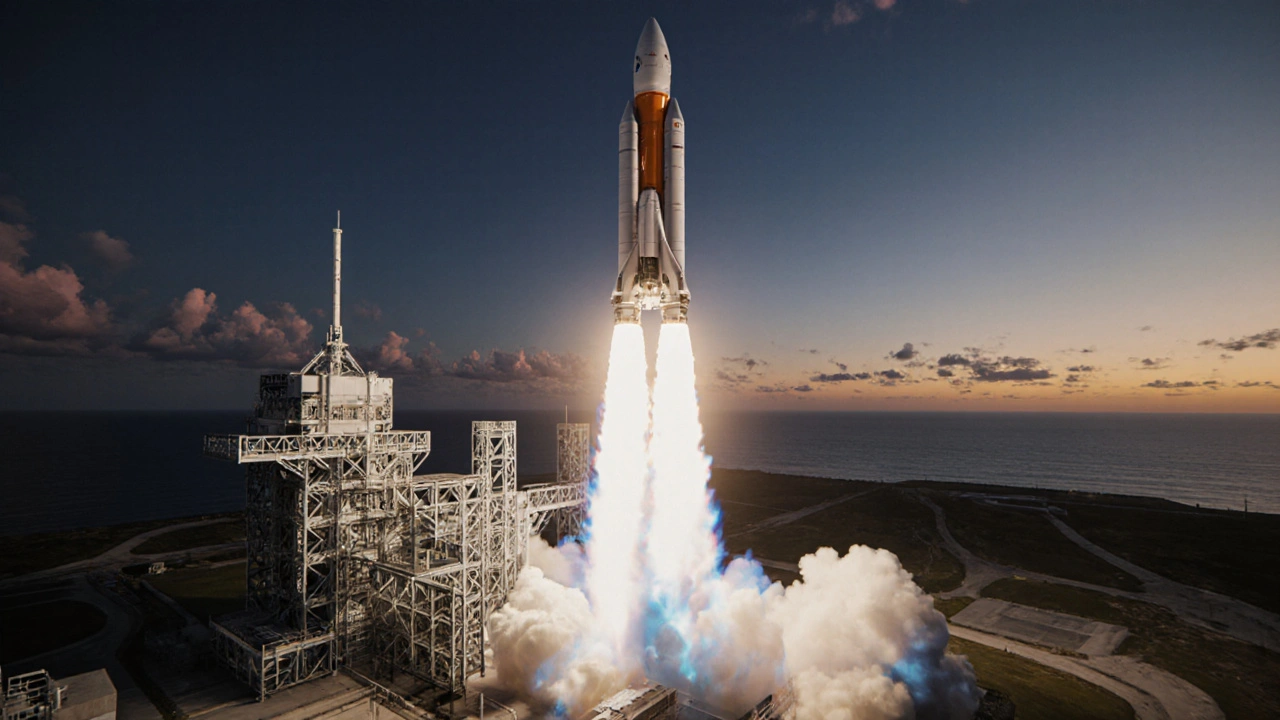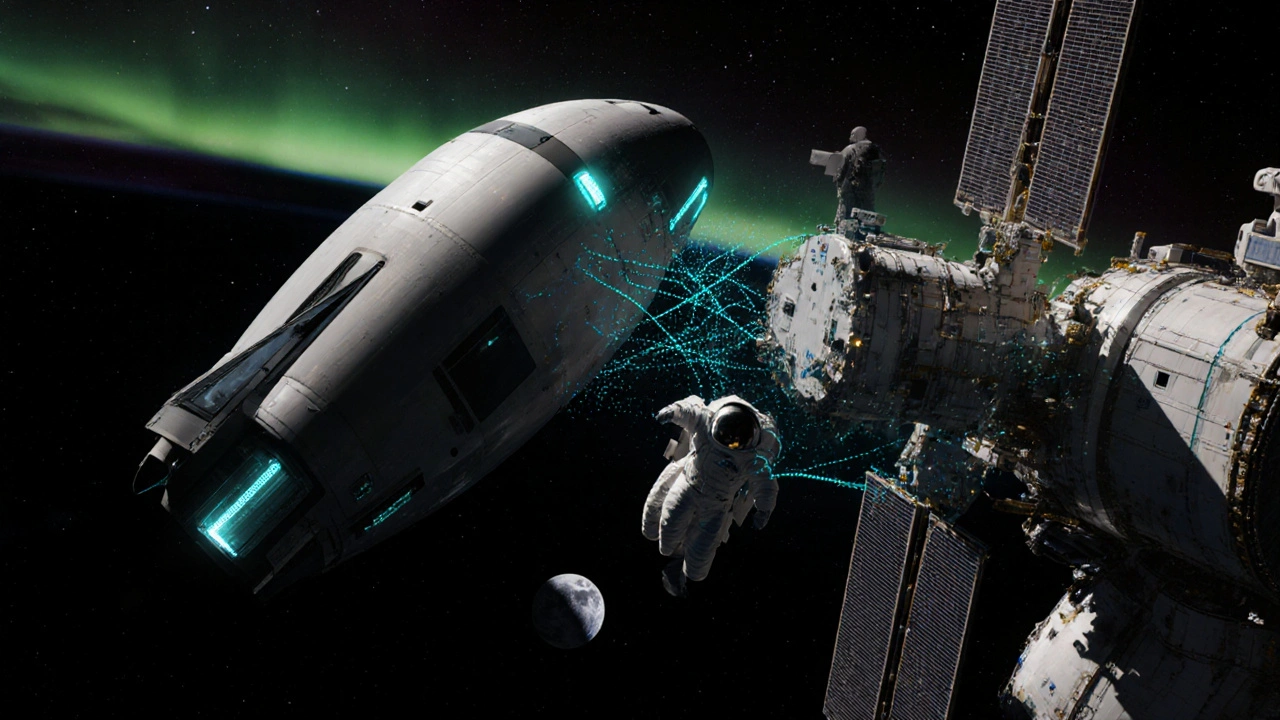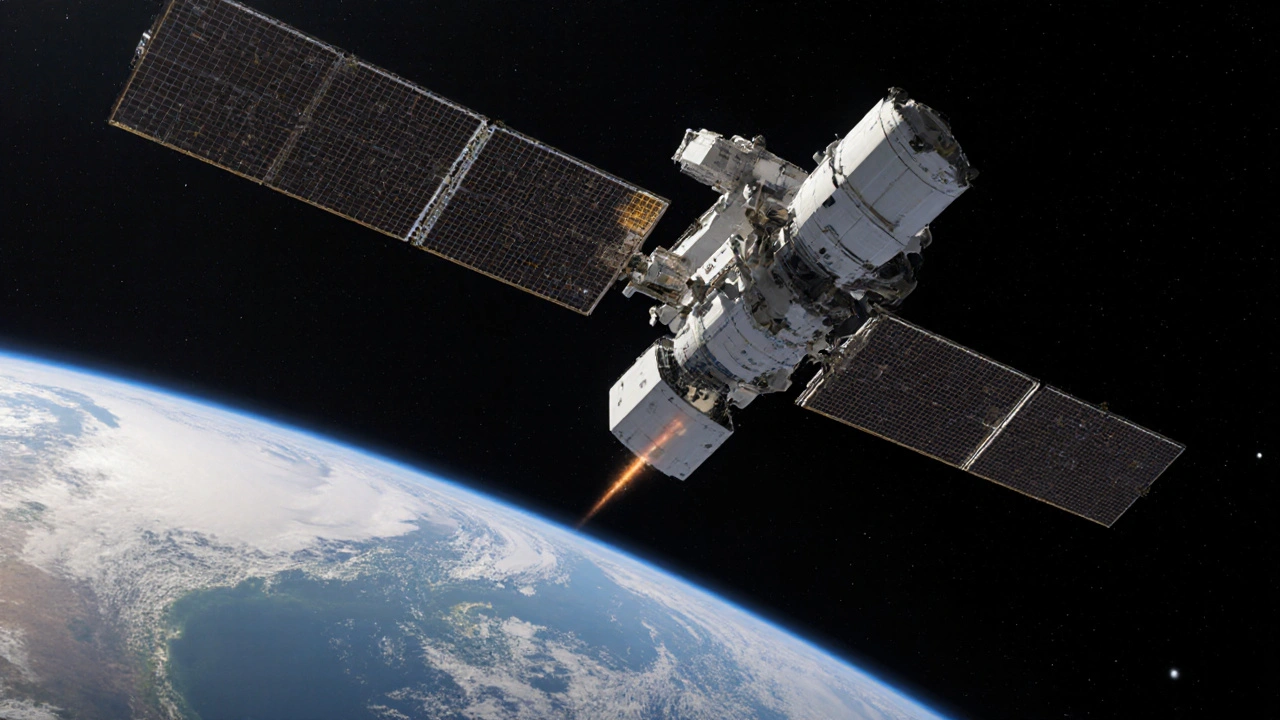SpaceX Crew-5 Mission Timeline Simulator
Launch Countdown to Crew-5 Mission
Click on any milestone for details
People are buzzing: SpaceX Crew-5 destination - where is the next crewed flight actually heading? The answer is familiar but still exciting: the mission is bound for the International Space Station (ISS) in low‑Earth orbit. Below we break down what that means, who’s on board, what the flight will carry, and why it matters for the future of commercial spaceflight.
Key Takeaways
- SpaceX Crew‑5 will launch aboard a Falcon9 rocket from Launch Complex 39A at Kennedy Space Center.
- The vehicle is a CrewDragon capsule that will dock with the ISS’s Harmony module.
- Four NASA astronauts and two international partners will spend roughly six months aboard the station.
- Scientific payloads include microgravity protein crystal growth, Earth‑observation cameras, and a new technology demonstration for autonomous docking.
- The mission continues SpaceX’s role in NASA’s Commercial Crew Program and paves the way for future deep‑space crew flights.
Mission Overview
SpaceX is a private aerospace company that designs, manufactures, and launches rockets and spacecraft. Since 2020, SpaceX has been the sole provider of crewed launches to the ISS under NASA’s Commercial Crew Program. Crew‑5, officially designated SpX‑5, marks the fifth operational flight of the CrewDragon capsule. The mission is scheduled for 28May2025, with a target launch window of 02:41UTC.
Where Is the Destination?
The destination is the International Space Station - a 420‑ton, 92‑meter‑long orbital laboratory that circles Earth at roughly 400km altitude and 51.6° inclination. The ISS serves as a microgravity research platform, a testbed for new technologies, and a stepping‑stone for future missions to the Moon and Mars.
When the CrewDragon reaches orbit, it will perform a series of automated maneuvers, then approach the ISS’s Harmony node using the station’s International Docking Adapter (IDA‑2). The docking port lies on the forward end of Harmony, offering a direct link to the US laboratory module, Unity.

Launch Vehicle and Spacecraft
The launch stack consists of a Falcon9 rocket - SpaceX’s reusable two‑stage launch vehicle. The first stage will return to Landing Zone 1 at Cape Canaveral after separation, while the second stage fires its MerlinVacuum engine to place CrewDragon into a low‑Earth orbit matching the ISS’s trajectory.
The spacecraft, CrewDragon, is a pressurized capsule capable of carrying up to seven passengers, though Crew‑5 will transport six - four NASA astronauts and two international partners. It features an autonomous docking system, a splash‑down recovery capability in the Atlantic Ocean, and a “trunk” section that holds additional cargo.
Crew and International Partners
- Josh Cassada (NASA) - mission commander, veteran of Expedition69.
- Jennifer Morgan (NASA) - flight engineer, first female commander of a commercial crew mission.
- André Kuipers (ESA) - ESA astronaut, bringing experiments on plant growth in microgravity.
- Koichi Sato (JAXA) - JAXA astronaut, tasked with Earth‑observation sensor deployment.
- Tom Marshburn (NASA) - veteran of three previous Crew missions, handling station maintenance.
- Nicole Mann (NASA) - experienced pilot, overseeing crew safety during ascent and re‑entry.
Scientific Payloads and Experiments
Beyond transporting crew, Crew‑5 carries a suite of research hardware:
- Microgravity Protein Crystallography (MPC) - aims to grow larger protein crystals for pharmaceutical development.
- Spaceborne Lidar for Atmospheric Dynamics (SLAD) - a lidar instrument that will map atmospheric density variations.
- Autonomous Docking Demonstrator (ADD) - a new algorithm test that could enable future spacecraft to dock without ground intervention.
- Two CubeSat deployments: one built by a University of Colorado engineering class, another by a Japanese high‑school robotics team.
Mission Timeline
- Launch (28May2025, 02:41UTC) - Falcon9 lifts off from LC‑39A.
- Orbit Insertion (≈12min after launch) - CrewDragon reaches a 400km circular orbit.
- Rendezvous (≈24h after launch) - Automated burns align the capsule with the ISS’s orbital plane.
- Docking (≈27h after launch) - Soft‑capture and hard‑capture of the docking port.
- Hatch Opening (≈30h after launch) - Crew members enter the station and begin handover procedures.
- Mission Duration (≈180days) - Crew performs research, maintenance, and outreach.
- Undocking & Departure (≈April2026) - Capsule backs away, performs de‑orbit burn, and splashes down in the Atlantic.

Why This Destination Matters
Sending crew to the ISS may seem routine now, but each flight adds valuable data:
- Human‑Spaceflight Resilience: Continuous presence tests life‑support reliability and crew health protocols.
- Technology Validation: The ADD experiment could reduce reliance on ground‑based navigation, a key step for lunar‑orbiting missions.
- International Collaboration: ESA and JAXA partners keep global cooperation strong, a political advantage when planning Moon bases.
Comparison: Crew‑5 vs. Previous Crew Flights
| Attribute | Crew‑4 (2024) | Crew‑5 (2025) |
|---|---|---|
| Launch Vehicle | Falcon9 Block5 | Falcon9 Block5 (upgraded engines) |
| Docking Port | Harmony (IDA‑1) | Harmony (IDA‑2) |
| Crew Size | 4 (NASA) + 1 ESA | 4 (NASA) + 1 ESA + 1 JAXA |
| Mission Length | ≈180days | ≈180days |
| New Payload | Microgravity Fluid Physics | ADD autonomous docking demo |
How Crew‑5 Fits Into SpaceX’s Broader Plans
SpaceX views the Commercial Crew Program as a springboard. Each successful ISS flight refines the CrewDragon’s systems, builds confidence for higher‑risk missions, and generates revenue that funds the development of Starship for deep‑space crew transport. By perfecting autonomous docking and long‑duration life‑support on the ISS, SpaceX gathers the data needed to safely send astronauts around the Moon on the ArtemisIII contract and eventually to Mars.
Frequently Asked Questions
What is the primary destination of SpaceX Crew‑5?
The mission will dock with the International Space Station’s Harmony module, using the International Docking Adapter 2.
When does Crew‑5 launch?
The scheduled launch window is 28May2025 at 02:41UTC from Launch Complex 39A at Kennedy Space Center.
Who are the astronauts on board?
Four NASA astronauts - Josh Cassada, Jennifer Morgan, Tom Marshburn and Nicole Mann - plus ESA astronaut André Kuipers and JAXA astronaut Koichi Sato.
What scientific experiments will be performed?
Key experiments include microgravity protein crystallography, a lidar atmospheric sensor, an autonomous docking demonstration, and two CubeSat deployments.
How long will the crew stay on the ISS?
The mission is planned for about 180days, after which the CrewDragon will undock and splash down in the Atlantic Ocean.

